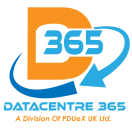Optical transceivers are nothing but small devices that are used for the transmission and reception of data.
The data is sent through an optical fibre in the form of light pulses and this travels at high speeds covering long distances. The transceiver is important in the transmission of this data because this is the key component with the help of which electrical signals are converted to light signals or the reverse case. These fibres can be embedded or plugged into the network device that can receive and send signals.
These optical transceivers come in a number of shapes and sizes and the different variants are commonly called as form factors.
What particular type of form factor would be required is dependent on the type of data, the speed of transmission and the distance required to cover. A set of rules are there that determine the method of the transmission of the data and these are known as protocols.
If the requirement is the transmission of high levels of data traffic then an optical transceiver is a must have component in the entire network setup.
To put it in simple words, transceivers are lasers which have specific wavelength and which convert electrical electrical data signals received from data switches to optical signals. The signals are then transmitted through optical fibre in unique wavelengths.
None of the channels interfere with the other because light has unique physical properties and this is why it is helpful that any mix of voice, WAN, SAN or video services can be transmitted over a single fibre simultaneously.
The form factors specify the transceiver’s dimensions. The size of the transceivers vary according to different speeds and protocols. The designs are done as per the MSA (Multisource Agreement). This standard has been set up to ensure that different vendors design and manufacture similar form-factor transceivers.

